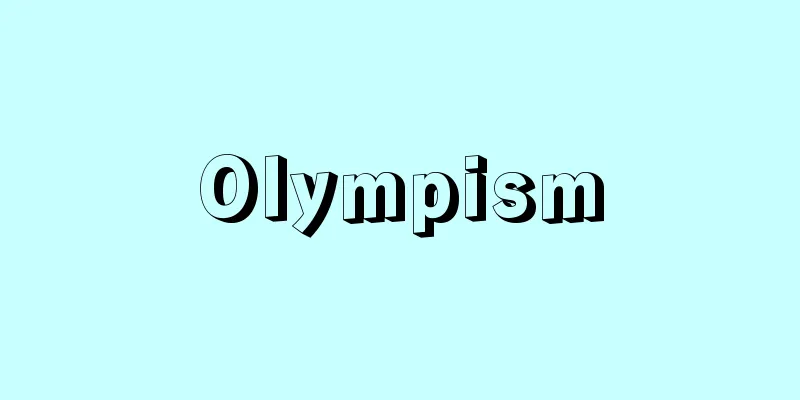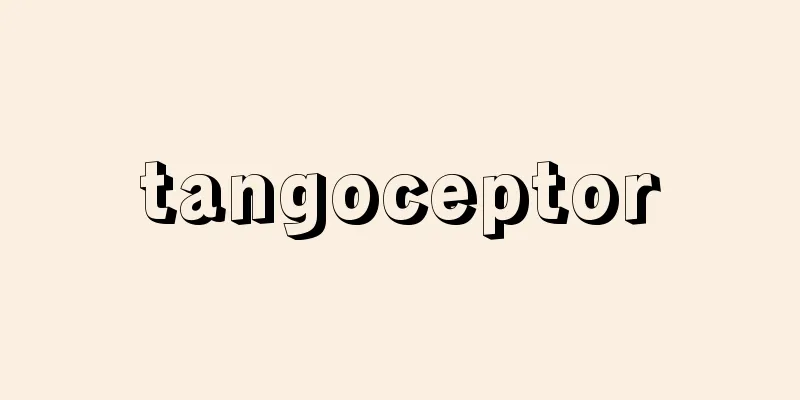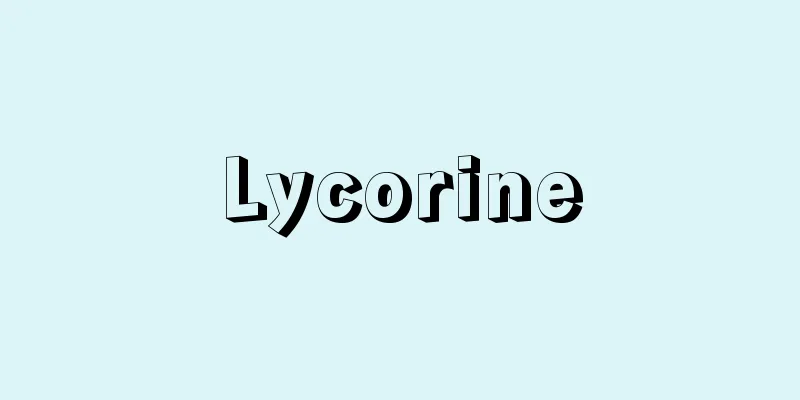Children's Center - JIDOKAN
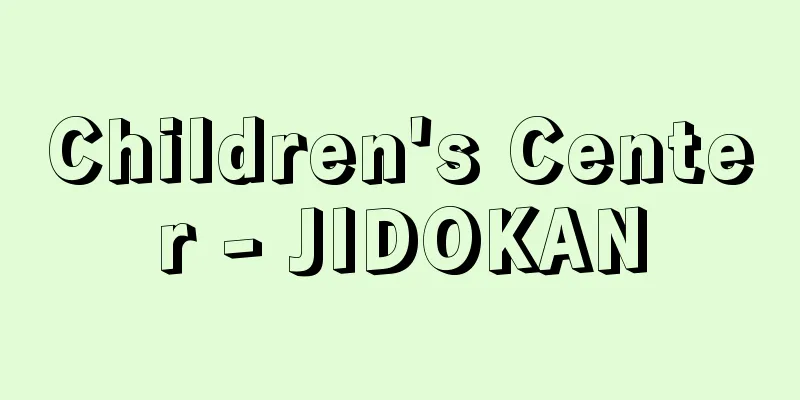
|
Based on Article 40 of the Child Welfare Law, a children's center is a child welfare facility (one of the child welfare facilities) under the jurisdiction of the Ministry of Health, Labor and Welfare, which provides healthy play for children, promotes their health, and enriches their emotions, just like a children's playground. Based on the "Standards for the Facilities and Operation of Child Welfare Facilities," and following the ordinances of each city or town, children's centers are required to have meeting rooms, play rooms, libraries, and toilets (Article 37 of the Standards for the Facilities and Operation of Child Welfare Facilities). [Takashi Nakamura July 19, 2017] HistoryThe origins of children's center activities in Japan can be found in the various activities aimed at children that were part of the settlement movement. The settlement movement was a social welfare project that began in England in the 19th century, in which students and Christians would live in areas where poor people lived, and in order to improve their lives, they would study together, engage in cultural activities, offer advice on daily life, and carry out various activities in certain areas. It was introduced to Japan at the beginning of the 20th century and was developed in large cities such as Tokyo, Osaka, and Kobe. After the Second World War, the Child Welfare Law was enacted in 1947, with the aim of not only protecting war orphans and homeless children, but also maximizing the individuality and potential of each and every child, and with this goal in mind, "healthy upbringing." Article 40 of the Child Welfare Law stipulates that children's centers be established as facilities to realize the idea of healthy upbringing in the local community (at that time, 44 children's centers had already been established). Although the Child Welfare Law was enacted, the development of children's centers was delayed because the children who needed protection were given top priority and there was no obligation to establish them, and in the 10 years or so after the law was enacted, only around 200 centers were opened. From around 1960, movements calling for the establishment of after-school care centers became active in various regions, and coupled with industrialization due to rapid economic growth, population migration to cities, a lack of playgrounds due to the deterioration of urban environments, and frequent traffic accidents involving children, in 1963 the Ministry of Health and Welfare (now the Ministry of Health, Labor and Welfare) decided to provide subsidies for the construction and operating costs of city-run children's centers. This was the first national subsidy for children's centers. In 1968 the National Children's Center Liaison Council was formed, and in 1975 the National Children's Center Association was established, and national organizations to promote the activities of children's centers were established. However, in the 1980s, under the "local autonomy" policy, national subsidies for personnel expenses were abolished in 1986 (and were made a local allocation tax measure), and in 1997 (Heisei 9), operating expenses for publicly established and operated children's centers were abolished (publicly established and operated centers excluding prefectural centers were made a local allocation tax measure). Furthermore, in 2012 (Heisei 24), operating expenses for private children's centers were also abolished. "Children's Castle," the only national comprehensive children's center in the country that opened in 1985 and was a symbol of children's centers nationwide, closed in 2015 due to the aging of the facility, the diversification of playgrounds with the opening of various types of private theme parks, and the progress of the development of children's centers by local governments. As of October 2014, there were 4,598 children's centers (2,794 publicly operated and 1,804 privately operated). [Takashi Nakamura July 19, 2017] kinds(1) Small-scale children's centers are facilities serving small communities that have a comprehensive function for the healthy development of children, providing healthy play for children, promoting their health, enriching their emotions, and encouraging the development and promotion of local organizational activities such as mothers' clubs and children's groups. (2) Children's Center: A facility that has the functions of a small children's hall, as well as activities and facilities aimed at promoting physical fitness through play (mainly exercise). Large children's centers have been legally recognized since 1994, and are facilities that provide support for the development of older children, such as junior high school and high school students. (3) Large children's centers In principle, they are active in a prefecture or in a wider area, and are classified into Type A and Type B. Large children's centers established by prefectures are expected to promote the creation of a network with other children's centers within the prefecture. To this end, they collect information, provide information to prefectural residents, hold steering committee meetings, conduct training programs, and carry out PR activities. In addition to activities within the large children's centers, they also carry out mobile children's center activities as outreach (delivering expertise and know-how) to children's centers within the prefecture and to areas where no children's centers are established. [Type A children's center] Plays a role in providing guidance and coordinating with small children's centers and children's centers within the prefecture. The guidelines for establishment and operation state that the building must be at least 2,000 square meters in size, with a suitable plaza, making it a large facility. In addition to the facilities and equipment required for each type of children's center, the guidelines also list the installation of a training room and a multipurpose hall, so it is expected that comprehensive activities for healthy development will be carried out. It is equipped with exhibition equipment and large play equipment with a variety of themes, such as art, science, culture, history, local climate, food, and the environment, and is designed with both hard and soft features in mind to support children's growth through touch and experience. [Type B children's center] These are located in areas with a rich natural environment, where children can stay overnight and engage in healthy developmental activities through play that makes use of nature. For this reason, they have accommodation facilities and outdoor activity facilities. According to the establishment and operation guidelines, Type B children's centers were approved for establishment in fiscal year 1990. (4) Other children's centers: These are legally required to meet the various conditions for facilities and operation of children's centers, to be public and permanent, and to be appropriate to the scope and characteristics of the target area and the actual conditions of the target children. Since there are no clear standards, it is up to the discretion of the prefecture or municipality that notified the center. [Takashi Nakamura July 19, 2017] StaffChildren's centers are required to have "persons who instruct children in play" (commonly known as child welfare workers) stationed there (Article 38 of the Standards for the Facilities and Operation of Child Welfare Institutions). The same article also stipulates that "persons who instruct children in play" must be graduates of training facilities, qualified nursery school teachers or social workers, or licensed teachers. Play instruction is intended to enhance children's independence, sociability, and creativity, thereby promoting healthy development activities in the community (Article 39 of the same Standards). Child welfare workers are understood to have two roles: (1) the role of playworker and (2) the role of child social worker. [Takashi Nakamura July 19, 2017] assignmentChildren's centers, which are child welfare facilities for children aged 0 to 17, are expected to play a more important role than ever before. Problems surrounding children today are becoming more serious, including a lack of playgrounds and places for children to stay due to urbanization, as well as anxiety and difficulties in raising children, low self-esteem, bullying, and delinquency. However, there are still municipalities that do not have any children's centers at all, and there is a possibility that in the future, there will be closures and consolidations due to aging and financial difficulties, such as Tokyo's "Children's Castle." In addition, the child welfare workers who are assigned to children's centers are required to have high levels of expertise, which can be said to be children's playworkers and social workers, but their treatment (working conditions) are poor. Therefore, in the future, children's centers will need to not only increase in number, but also assign and increase the number of specialized staff. [Takashi Nakamura July 19, 2017] "Children's Centers: Theory and Practice ENCYCLOPEDIA" (2007), edited and published by the Foundation for the Promotion of Healthy Child Development" ▽ "Child Development and Child Rearing Support at Children's Centers: Trends in Children's Center Policies and Practical Evaluation" (2012, Aikawa Shoten), written by Makiko Yaegashi" ▽ "Children's Centers and After-School Children's Clubs Textbook Series 2: Theory of Children's Centers" (2015), edited and published by the Foundation for the Promotion of Healthy Child Development" [Reference] | |Source: Shogakukan Encyclopedia Nipponica About Encyclopedia Nipponica Information | Legend |
|
児童福祉法第40条に基づいて、児童遊園と同じく児童に健全な遊びを与え、その健康を増進したり、情操を豊かにしたりするための厚生労働省所轄の児童厚生施設(児童福祉施設の一つ)。「児童福祉施設の設備及び運営に関する基準」に基づき、市町村の条例に従い、児童館には集会室や遊戯室、図書室、便所がかならず設けられている(児童福祉施設の設備及び運営に関する基準37条)。 [中村強士 2017年7月19日] 沿革日本における児童館活動は、セツルメント運動の子どもを対象としたさまざまな活動のなかにその源流をみることができる。セツルメント運動とは、19世紀イギリスで始められた社会福祉事業で、貧民が住むところに学生やキリスト教関係者が住み込み、彼らの生活を改善するためにいっしょに勉強したり、文化的活動をしたり、生活相談にのったり、人々の暮らす環境を整備したりといった一定の地域におけるさまざまな活動のことである。20世紀の初めに日本に伝わり、東京や大阪、神戸などの大都市部で展開された。 第二次世界大戦後、戦災孤児や浮浪児を保護するだけでなく、すべての子どもたちひとりひとりの個性や可能性を最大限に発達させることを「健全育成」と考え、これを目的にした児童福祉法が誕生した(1947)。児童福祉法で健全育成の理念を地域社会で実現する施設として第40条に定められたのが児童館である(当時すでに44館の児童館が開設されていた)。 児童福祉法が施行されたものの保護すべき子どもが最優先であり、かつ必置の義務がないことから児童館の整備は遅れ、児童福祉法成立後十数年間は200館程度しか開設されていない。1960年(昭和35)ころから各地で学童保育の設置を求める運動が活発になり、また高度経済成長による工業化、都市への人口移動、都市環境の悪化による遊び場の不足、子どもの交通事故の多発なども相まって、1963年に厚生省(現、厚生労働省)は市町村立の児童館の施設整備費・運営費に対して補助金を出すことにした。これが児童館に対する最初の国庫補助となった。1968年に全国児童館連絡協議会が結成され、1975年には全国児童館連合会の設立など、児童館の活動を推進する全国組織が整備されていった。ところが、1980年代になると「地方分権」のもとで、1986年に人件費の国庫補助が廃止(地方交付税措置化)され、1997年(平成9)には公設公営児童館の事業費が廃止された(県立を除く公設公営分が地方交付税措置化)。さらに2012年(平成24)には、民間児童館の事業費も廃止された。1985年に開館した全国唯一の国立総合児童センターであり、全国の児童館のシンボル的存在であった「こどもの城」は、施設の老朽化やさまざまなタイプの民間テーマパークができるなど遊び場が多様化したこと、自治体で児童館の整備が進んできたこと等を理由に2015年に閉館した。2014年10月時点での児童館設置数は4598か所(公営2794か所、民営1804か所)となっている。 [中村強士 2017年7月19日] 種類(1)小型児童館 小地域を対象として、児童に健全な遊びを与え、その健康を増進し、情操を豊かにするとともに、母親クラブ、子ども会等の地域組織活動の育成助長を図る等、児童の健全育成に関する総合的な機能を有する施設である。 (2)児童センター 小型児童館の機能に加えて、遊び(運動を主とする)を通じての体力増進を図ることを目的とする事業・設備のある施設。また「大型児童センター」は、1994年から法令上の位置づけがされたもので、中学生、高校生等の年長児童に対しての育成支援を行う施設である。 (3)大型児童館 原則として、都道府県内や広域の子どもたちを対象とした活動を行っており、A型とB型に区分されている。都道府県が設置する大型児童館では、当該県内の児童館とのネットワーク構築を推進することが期待されている。そのため、情報収集や県民等への情報提供、運営委員会の開催、研修事業、広報事業などが行われている。また、大型児童館内での事業にとどまらず、県内の児童館や児童館が設置されていない地域に対してのアウトリーチ(専門性やノウハウを届ける)として、移動児童館活動が実施されている。 〔A型児童館〕都道府県内の小型児童館、児童センターの指導や連絡調整等の役割を果たす。設置運営要綱上、建物の広さが2000平方メートル以上に加え、適当な広場を設けるとされているため、大きな施設規模を誇る。児童センター種別の施設設備に加えて、研修室や多目的ホールなどの設置が要綱に例示されているため、総合的な健全育成活動の展開が期待されている。芸術、科学、文化、歴史、地域風土、食、環境など多様なテーマをもつ展示設備・大型遊具を配置し、子どもたちがふれて体験して育っていくことを支えるハードとソフトを意識してつくられている。 〔B型児童館〕豊かな自然環境に恵まれた地域内に設置され、子どもが宿泊しながら、自然を生かした遊びを通じた健全育成活動を行っている。そのため、宿泊施設と野外活動設備がある。設置運営要綱上、B型児童館は1990年度に設置が認められた。 (4)その他の児童館 法令上、児童館の設備・運営に関する諸条件に準じているものであって、公共性および永続性を有し、それぞれの対象地域の範囲、特性および対象児童の実態等に相応したものとされている。明確な基準が存在しないため、届け出た都道府県・市町村の判断による。 [中村強士 2017年7月19日] 職員児童館には「児童の遊びを指導する者」(通称、児童厚生員)が配置されることになっている(児童福祉施設の設備及び運営に関する基準38条)。また、同条で「児童の遊びを指導する者」は、養成施設を卒業した者や保育士や社会福祉士の資格保持者、教員免許保持者などでなければならないとされている。遊びの指導については、児童の自主性、社会性および創造性を高め、もって地域における健全育成活動の助長を図ることとなっている(同基準39条)。児童厚生員には、(1)プレイワーカーとしての役割と、(2)児童ソーシャルワーカーとしての役割の二つの役割があると理解されている。 [中村強士 2017年7月19日] 課題0歳から17歳までの子どもを対象とする児童福祉施設である児童館は、これまで以上に重要な役割を担うことが求められる。都市化による子どもの遊び場や居場所の不足はもとより、子育て不安・困難や低い自己肯定感、いじめや非行問題など、現代の子どもをめぐる問題は深刻化している。しかし、いまだに児童館がまったくない市町村もあり、東京の「こどもの城」のように老朽化や財政難を理由にした閉館や統廃合も今後出てくる可能性がある。また、児童館に配置される児童厚生員とよばれる職員は、子どものプレイワーカーおよびソーシャルワーカーともいえる高い専門性を必要とするにもかかわらず、その待遇(労働条件)は低くおかれている。そのため児童館には、その増設はもとより、専門性を有した職員の配置・増員が今後求められる。 [中村強士 2017年7月19日] 『児童健全育成推進財団編・刊『児童館――理論と実践 ENCYCLOPEDIA』(2007)』▽『八重樫牧子著『児童館の子育ち・子育て支援――児童館施策の動向と実践評価』(2012・相川書房)』▽『児童健全育成推進財団編・刊『児童館・放課後児童クラブテキストシリーズ2 児童館論』(2015)』 [参照項目] | |出典 小学館 日本大百科全書(ニッポニカ)日本大百科全書(ニッポニカ)について 情報 | 凡例 |
Recommend
Si Nhiep (English spelling)
187‐226 A Chinese governor who ruled over Giaochi ...
Raw rice - mackerel
(It is said to come from the Chinese pronunciation...
Contract farming - Ukeoi Kosaku
A form of land use in which a landowner entrusts ...
Manpo
A city on the banks of the Yalu River in the nort...
Del
...Abbreviation: Del. A small constellation facin...
Ayu (sweetfish) - Ayu
A fish of the sweetfish family. It is also called ...
Arechiha - Arechiha
…British poet, playwright, and critic. Born in St...
Durchimitation
…In the 16th century, the equalization of voices ...
Paisij Hilendarski
1722‐98 A Bulgarian monk. Some say he died in 1773...
Kimoto - Kimoto
<br /> This is one of the methods for making...
Monoacid-Base - Issan Enki
A base that produces one hydroxide ion per chemic...
Goji rice - Kukomeshi
〘Noun〙 Rice made by picking young goji sprouts and...
Vagarshapat
…Population: 37,000 (1974). Until 1945 it was cal...
Sea of Okhotsk - Okhotsk Sea (English spelling)
A marginal sea in the northwest Pacific Ocean, se...
Taiyo [village] - Taiyo
A village in Kashima County in the southeastern pa...

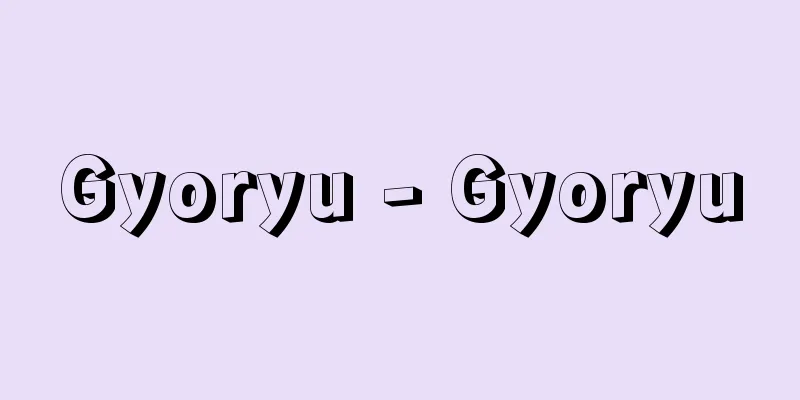

![Kawanabe [town] - Kawanabe](/upload/images/67cb46b091c62.webp)


